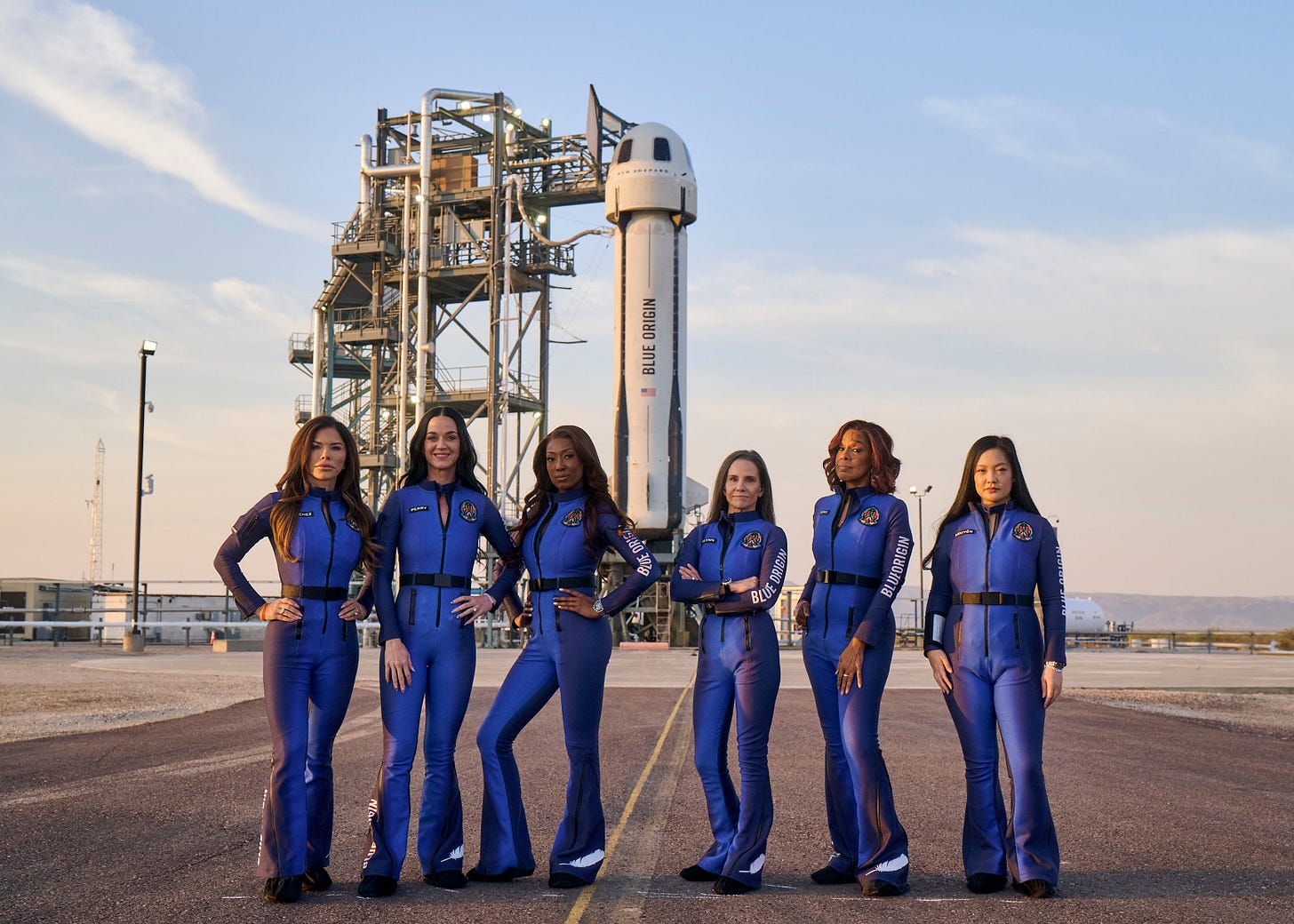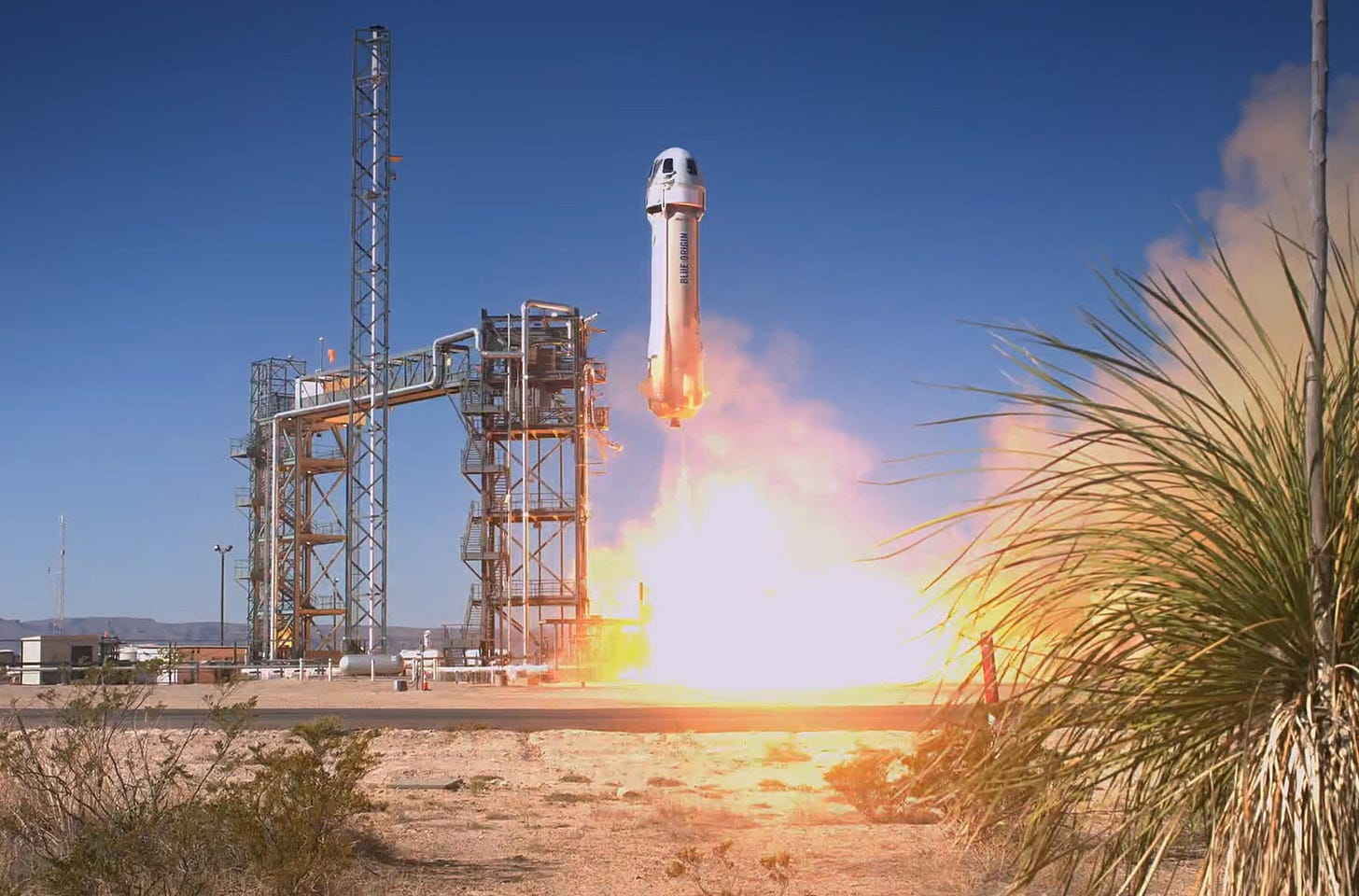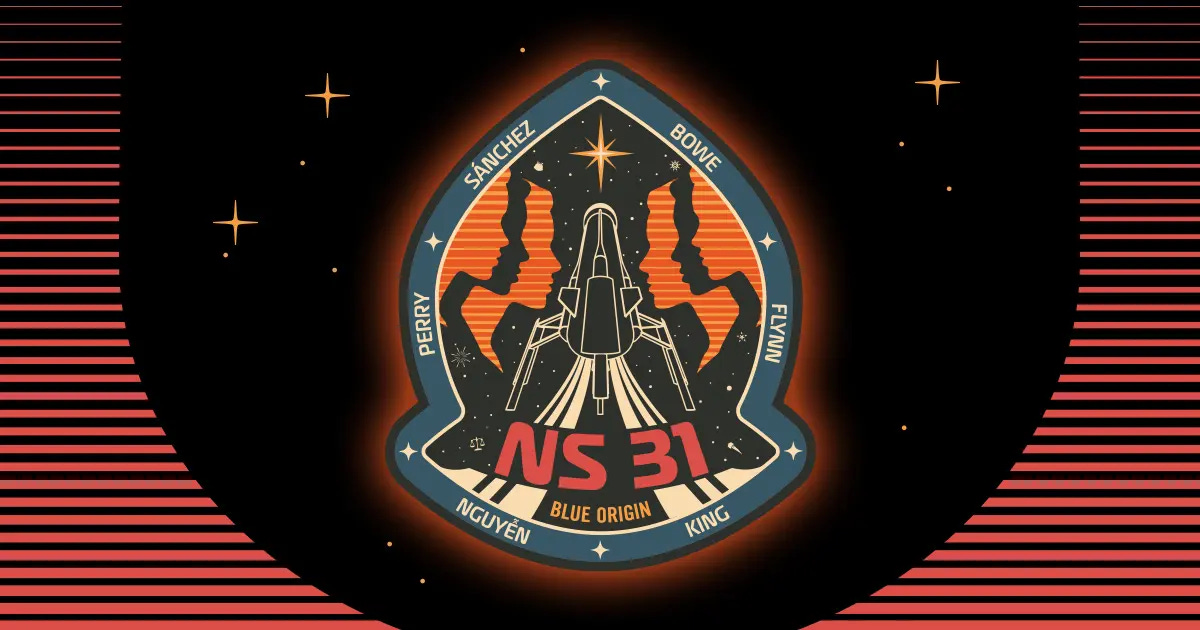Blue Origin Controversies Defy Simple Answers
All-Female Crew Inspires Dreams and Generates Hyperbole

Blue Origin’s first all-female flight drew global attention through its celebrity participants, as intended, but also generated controversy across several fronts, from the use of the term “astronaut” to questions of environmental cost and authenticity. These critiques require closer examination to understand their validity.
Observing the Mission
The NS-31 mission, launched on April 14, 2025, brought together a roster of high-profile participants, including Katy Perry, Gayle King, Lauren Sánchez, Aisha Bowe, Amanda Nguyễn, and Kerianne Flynn. Read more about their backgrounds and accomplishments here.
Watching a Blue Origin mission from launch to landing requires only about 10 minutes and provides a deeper understanding of the pivotal shift in how we travel. Links to a few videos are included at the end of this article to make it easy for you to see.
There was some drama in the lead-up to this one, as Jeff Bezos, founder of Blue Origin and Amazon, watched his fiancée blast off in his own company’s spacecraft. Rockets frequently explode or suffer what the industry calls “anomalies.” About 3% of all people who have launched to space have died, though none have died on commercial space flights.
Below, we take a closer look at five of the key controversies surrounding this flight:
1. The “Astronaut” Designation Debate
U.S. Transportation Secretary Sean Duffy stated that the NS-31 crew did not meet FAA criteria for astronaut designation. Under current guidelines, only those who perform safety-critical roles or contribute meaningfully to human spaceflight qualify for US FAA astronaut wings.
At Spaceport Lounge, we’ve tracked every commercial space passenger since the first in 2001 in our proprietary database. There have been 179 passengers, including the six aboard this spaceflight. Our database categorizes travelers by groups such as paying passengers versus invited guests, and space tourists versus professional astronauts.
We classify Blue Origin passengers as space tourists. The flight is autonomous, requires no training, and assigns no operational duties. We celebrate space tourism, however, it is a different experience than being a professional astronaut, who earned the title through years of preparation and service.
It’s worth noting that Gayle King declined being referred to as an astronaut in her post-mission interview. Kudos to her.
Astronauts or tourists? At Spaceport Lounge, we we celebrate space tourism as a valid and evolving travel segment. Video: Blue Origin IG
2. Environmental Impact
Environmental concerns around space flights were numerous. Supporters of Blue Origin missions, including Jeff Bezos, cite their clean fuel design. At a press conference after the first crewed mission in July 2021, Bezos called the rocket’s fuel “the most environmentally benign propellant you can choose.”
The propellant, liquid hydrogen and liquid oxygen, combusts to release only water vapor. Blue Origin asserts that no CO₂ is emitted during launch and flight.
The rub is that producing liquid hydrogen is carbon-intensive. To produce the 4 metric tons of liquid hydrogen needed per flight creates about 40 metric tons of CO₂. For comparison, a one-way commercial flight from Los Angeles to New York produces roughly 58 metric tons per flight.
Here’s the comparative per flight and per passenger using average quantities:
Blue Origin to Kármán Line
40 MT of CO₂ from Liquid Hydrogen Production
6 Passengers
6.7 MT of CO₂ Per Passenger
LAX-NYC Flight
58 MT of CO₂
175 Passengers
0.33 MT of CO₂ Per Passenger
While the per flight impact is about 30% lower for the spaceflight, the per passenger is about 20X higher in this example. Note that the flight selection was arbitrary and is meant to be illustrative as there are obviously longer and shorter flights.
The relative value of these flights is open to debate. We share the data for all to consider, which flight type, if either, do you find to be worthwhile considering the carbon emissions and environmental impact?

3. Tickets Cost “Tens of Millions of Dollars” Each
Conservative commentator Todd Starnes claimed that the celebrities paid “tens of millions” per seat. That is incorrect. Our estimate for a New Shepard ticket is $2.5 million, and many passengers fly as invited guests at no cost.
Most of the NS-31 crew were likely guests. Katy Perry, Gayle King, Aisha Bowe, and Amanda Nguyễn all bring significant public influence, making them valuable promotional partners. Lauren Sánchez, engaged to Jeff Bezos, led the crew. The only crew member without broad enough recognition to merit free passage, Kerrianne Flynn, was likely the sole paying passenger.
4. Conspiracy Theories
One of the more persistent conspiracy theories surrounding the NS-31 mission centers on the capsule door. Bezos is supposed to unlock the capsule with a large key. Viewers of the live stream could see the hatch open prematurely from the inside before Bezos and the ground crew approached, suggesting the flight was staged.
The New Shepard capsule is equipped with an internal release mechanism that allows passengers to open the hatch themselves once safely on the ground. It is standard procedure for Blue Origin personnel to wait for visual or verbal confirmation from the crew before approaching the vehicle. The ability for passengers to initiate door opening is a designed safety feature.
Other conspiracy theories include Katy Perry’s hair not floating in microgravity, lack of re-entry burn marks, satanic symbolism in the mission patch, and CGI or studio production allegations. We aren’t going there.
5. Purpose and Perception of the Mission
Critics argue that NS-31 prioritized publicity over science. While the passenger list and presentation suggest a focus on visibility, other factors carry value.
The mission renewed attention to women in space and helped introduce broader audiences to the concept of commercial space travel. Blue Origin has taken a step forward in promoting female participation, though more consistency is needed. It currently lags behind the other two commercial spacelines in the percentage of female passengers per the data below.

*See Spaceport Lounge’s demographics article for additional insights
At Spaceport Lounge, we view space tourism as a valid and evolving travel segment. Like ballooning or early aviation, it may seem superficial at first. But each flight normalizes the experience and contributes data. What feels promotional today will help build the foundations of lasting commercial space travel.

NS-31 Viewing Links
50-Min Full Mission with Interviews (the full flight is the first 10 minutes followed by the interviews)








